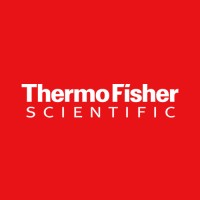CD117 / PerCP-Cy5.5 / 2B8
Product Details
| Description | c-Kit / CD117 Monoclonal Antibody, PerCP, Cy® 5.5 conjugate (2B8). c-Kit, also known as CD117 and stem cell factor receptor, is a 145 kDa transmembrane tyrosine kinase encoded by the c-Kit proto-oncogene. c-Kit acts to regulate a variety of biological responses including cell proliferation, apoptosis, chemotaxis and adhesion. Ligand binding to the extracellular domain leads to autophosphorylation on several tyrosine residues within the cytoplasmic domain, and activation. c-Kit mutations correlate with tumor growth and progression in a variety of cancers including mast cell disease, gastrointestinal stromal tumor, acute myeloid leukemia, Ewing sarcoma, and lung cancer. Phosphorylation at tyrosine 703 of c-Kit allows binding of Grb2 and activation of the Ras-Raf-ERK1&2 signaling pathway.FACS Assay Dependent - | |
|---|---|---|
| Conjugate | PerCP-Cy5.5 | |
| Clone | 2B8 | |
| Target Species | Mouse | |
| Applications | FC | |
| Supplier | Thermo Fisher Scientific | |
| Catalog # | Sign in to view product details, citations, and spectra | |
| Size | ||
| Price | ||
| Antigen | ||
| Host | ||
| Isotype |
About CD117
This gene encodes a receptor tyrosine kinase. This gene was initially identified as a homolog of the feline sarcoma viral oncogene v-kit and is often referred to as proto-oncogene c-Kit. The canonical form of this glycosylated transmembrane protein has an N-terminal extracellular region with five immunoglobulin-like domains, a transmembrane region, and an intracellular tyrosine kinase domain at the C-terminus. Upon activation by its cytokine ligand, stem cell factor (SCF), this protein phosphorylates multiple intracellular proteins that play a role in in the proliferation, differentiation, migration and apoptosis of many cell types and thereby plays an important role in hematopoiesis, stem cell maintenance, gametogenesis, melanogenesis, and in mast cell development, migration and function. This protein can be a membrane-bound or soluble protein. Mutations in this gene are associated with gastrointestinal stromal tumors, mast cell disease, acute myelogenous leukemia, and piebaldism. Multiple transcript variants encoding different isoforms have been found for this gene. [provided by RefSeq, May 2020]
This gene encodes a receptor tyrosine kinase. This gene was initially identified as a homolog of the feline sarcoma viral oncogene v-kit and is often referred to as proto-oncogene c-Kit. The canonical form of this glycosylated transmembrane protein has an N-terminal extracellular region with five immunoglobulin-like domains, a transmembrane region, and an intracellular tyrosine kinase domain at the C-terminus. Upon activation by its cytokine ligand, stem cell factor (SCF), this protein phosphorylates multiple intracellular proteins that play a role in in the proliferation, differentiation, migration and apoptosis of many cell types and thereby plays an important role in hematopoiesis, stem cell maintenance, gametogenesis, melanogenesis, and in mast cell development, migration and function. This protein can be a membrane-bound or soluble protein. Mutations in this gene are associated with gastrointestinal stromal tumors, mast cell disease, acute myelogenous leukemia, and piebaldism. Multiple transcript variants encoding different isoforms have been found for this gene. [provided by RefSeq, May 2020]
About PerCP-Cy5.5
PerCP-Cyanine® 5.5 (PerCP-Cy5.5) is a red-emitting tandem fluorophore that was originally designed to make the PerCP fluorophore more stable and increase signal intensity. The donor molecule, PerCP can be excited by the 488-nm blue laser and and transfers energy to the acceptor molecule, Cy5.5, which emitts light that can be captured with a 695/40 nm bandpass filter. PerCP-Cy5.5 has an excitation peak at 482 nm and an emission peak at 695 nm. There are superior alternatives to PerCP and PerCP-Cy5.5 including BB700, NovaFluor Blue 690 or PerCP-eFluor™ 710
PerCP-Cyanine® 5.5 (PerCP-Cy5.5) is a red-emitting tandem fluorophore that was originally designed to make the PerCP fluorophore more stable and increase signal intensity. The donor molecule, PerCP can be excited by the 488-nm blue laser and and transfers energy to the acceptor molecule, Cy5.5, which emitts light that can be captured with a 695/40 nm bandpass filter. PerCP-Cy5.5 has an excitation peak at 482 nm and an emission peak at 695 nm. There are superior alternatives to PerCP and PerCP-Cy5.5 including BB700, NovaFluor Blue 690 or PerCP-eFluor™ 710
Experiment Design Tools
Panel Builders
Looking to design a Microscopy or Flow Cytometry experiment?
Validation References
Reviews & Ratings
| Reviews |
|---|
Looking for more options?
2983 CD117 antibodies from over 53 suppliers available with over 137 conjugates.





